The questions in this article are from you. Those who posted them in the comments section at the end of the articles in the magazinedinlemn.ro received the answers at the time. They are questions about small mistakes made in production, in haste or carelessness, about unclear working methods, special properties and even more particular uses of adhesives. And because not everyone goes through the questions section - I know this because I get the same question several times - I have collected some of them here. They are not all the questions related to adhesives, I have chosen the ones that I think can help you, especially those in production, but also more specific questions. I hope you find this helpful.

How will the strength of the aracite bonding be affected if I forget to add the hardener?
PVA adhesives in moisture resistance class D2 or D3 may have hardener added up to 5%, depending on the manufacturer's specifications, making them much more resistant to moisture. Without this catalyst, the bonding properties do not disappear, the adhesive being as resistant to mechanical action but without moisture resistance. In other words, the bond strength of PVA adhesives will not be affected as long as the bonded objects are only used in dry indoor environments. The superior cross-linking provided by the hardener gives the adhesive strength in damp indoor environments - bathroom, kitchen - or outdoors.
What is the lifetime of the adhesive in a laminated wood beam?
The adhesives used for layered beams are polyurethane, melamine or phenol-resorcinic. Polymerization forms a very strong bond line. In practice, the result is a highly durable plastic material that is stronger than wood. The wood will certainly rot before the adhesive deteriorates. If the gluing is done correctly, the glue has been sufficiently absorbed into the wood, all the gluing instructions have been followed, any problems will not arise from the glue. Further information about polyurethane adhesives can be found at here.
How long can PVA adhesive stay open?
As long as the manufacturer recommends. If you do not have this recommendation, make sure that the adhesive film is wet and continuous when the parts are in contact. This open-phase time is influenced by the environmental conditions in the room where the bonding is being made and the humidity of the wood. The working temperature, atmospheric humidity, air currents, very low or very high humidity wood can influence the open phase time. Great care must be taken in extreme conditions. In the summer at very high temperatures and in the winter at low temperatures, special properties may be needed. An adhesive that can also be used at 0°C is, for example, TISZABOND D3 WINTER. It's hard to believe, but the glue was specially made to work with it in warehouses where the indoor temperature in winter can reach 0°C (see video at the end).
What do I do if the aracite has thickened?
The adhesive will thicken if the temperature in the working/storage area drops or if the curing reaction has started in the container for various reasons: out of warranty, very high storage temperature, unsealing the packaging and exposure of the product to factors that trigger the reaction. If the temperature drop is within the limits recommended by the manufacturer, the adhesive is not affected and can be used. If the temperature reaches the freezing limit, the adhesive freezes and its properties are affected.
Although an aqueous dispersion, there are also aracite-type adhesives that can be used after repeated freeze-thaw cycles. It is possible that after such a cycle the viscosity of the adhesive may increase. It only needs to be well mixed and can be used without any problems. I have written about such an adhesive resistant to repeated freeze-thaw cycles here. It's a TISZABOND adhesive from the company Szolvegy from Târgu Mureș.
How is the strength of a bond tested?
The qualities of an adhesive are specified in the product data sheet and must conform to certain standards. For example, PVA adhesives used for furniture and non-structural fittings must meet the requirements of European standard EN204. Strength tests are also standardized. The bonding is tested in tensile, flexural or twisting. In all these cases, the wood must yield before gluing in order for the gluing to be declared good. There are also specific standards, such as IKEA's, which are tougher than normal ones, where the wooden object (bed, chair, table, etc.) is tested to show that it can withstand different duty cycles.
The adhesives used to make structural elements for houses or wooden structures (glulam, CLT) have much higher requirements. The standards and strength tests are specific to each type of adhesive used to make those elements (polyurethane, melaminic, phenol-resorcinic, etc).
How important is the moisture content of wood for ordinary glues?
In the case of wood glue (aracite type), it is very important because the glue is absorbed into the wood. The higher the humidity of the wood, the lower the absorption. This leads to a decrease in bond strength. If, however, the wood is very dry, the absorption into the wood can be very high, decreasing the amount remaining on the surface or absorbing it completely in places where the deposited layer is thinner. In this case too, the result is still a decrease in bond strength. Moisture content of wood used for interior projects should be in the range of 8-12%, and for exterior projects around 14%.
However, there are adhesives, such as polyurethane or epoxy adhesives, which also work with high humidity in wood.
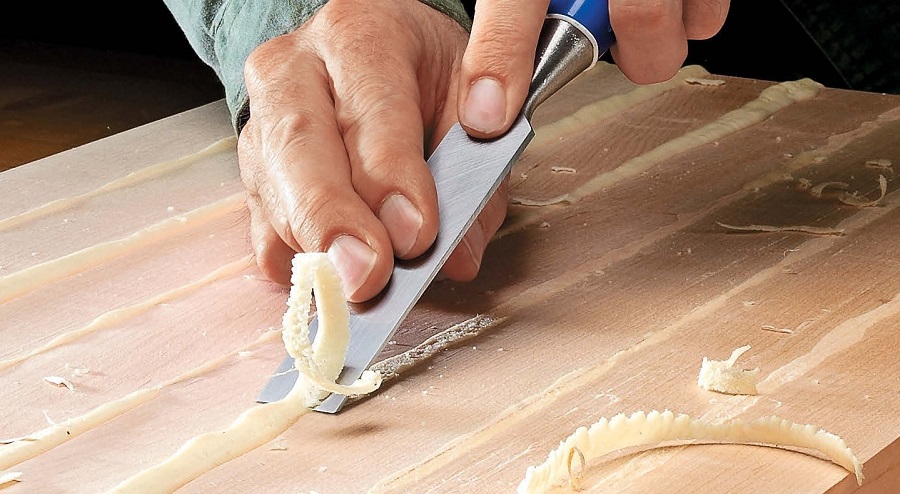
Why is the elasticity of an adhesive important if I want a rigid bond?
Wood is an elastic material and a rigid adhesive can restrict its movement. In addition, after nailing, some of the hardened adhesive remains on the surface and must be removed by mechanical means. For example, panels obtained by gluing together timber, need to be sanded, calibrated, straightened or roughened. A resilient adhesive will be less aggressive to grinding wheels, abrasive blades or cutting blades, prolonging their life.
Can a film of PVA adhesive, applied to the surface of a wooden object permanently placed outdoors, provide a protective water-repellent barrier in a mountain climate?
The film will not resist over time and will turn white. PVA D3 and D4 adhesives are moisture resistant when two pieces of wood are put together. The adhesive in this case has reduced direct contact with water, sun and weathering. If the adhesive is applied to wood, the surface in contact with the exterior is very large and the adhesive does not have the necessary characteristics to make it resistant to environmental factors.
Sometimes, problems with production jamming occur because of the speed at which work is done. Other times it is due to specific working conditions or product peculiarities. To reduce these, it is advisable to maintain an ongoing relationship with the adhesive supplier. An honest partnership will always lead to viable solutions and problem solving. I recommend you watch the company interview below to see how important such collaboration is. Just one example: the simple customization of labels has led to the elimination of defects caused by using the wrong adhesive.

























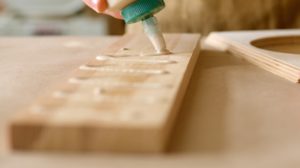


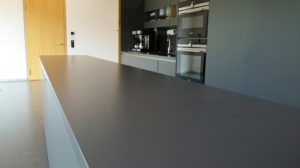

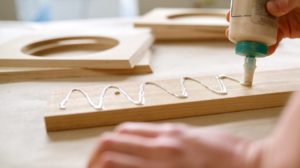
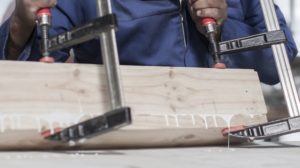
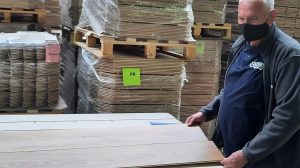



Add comment